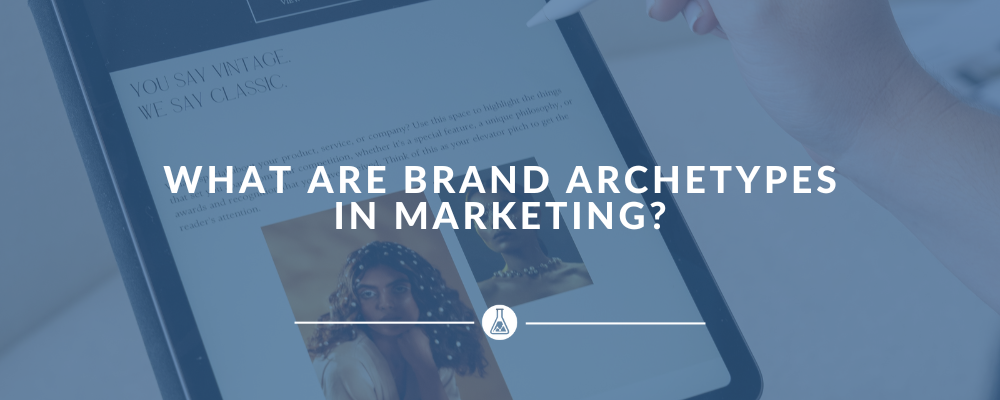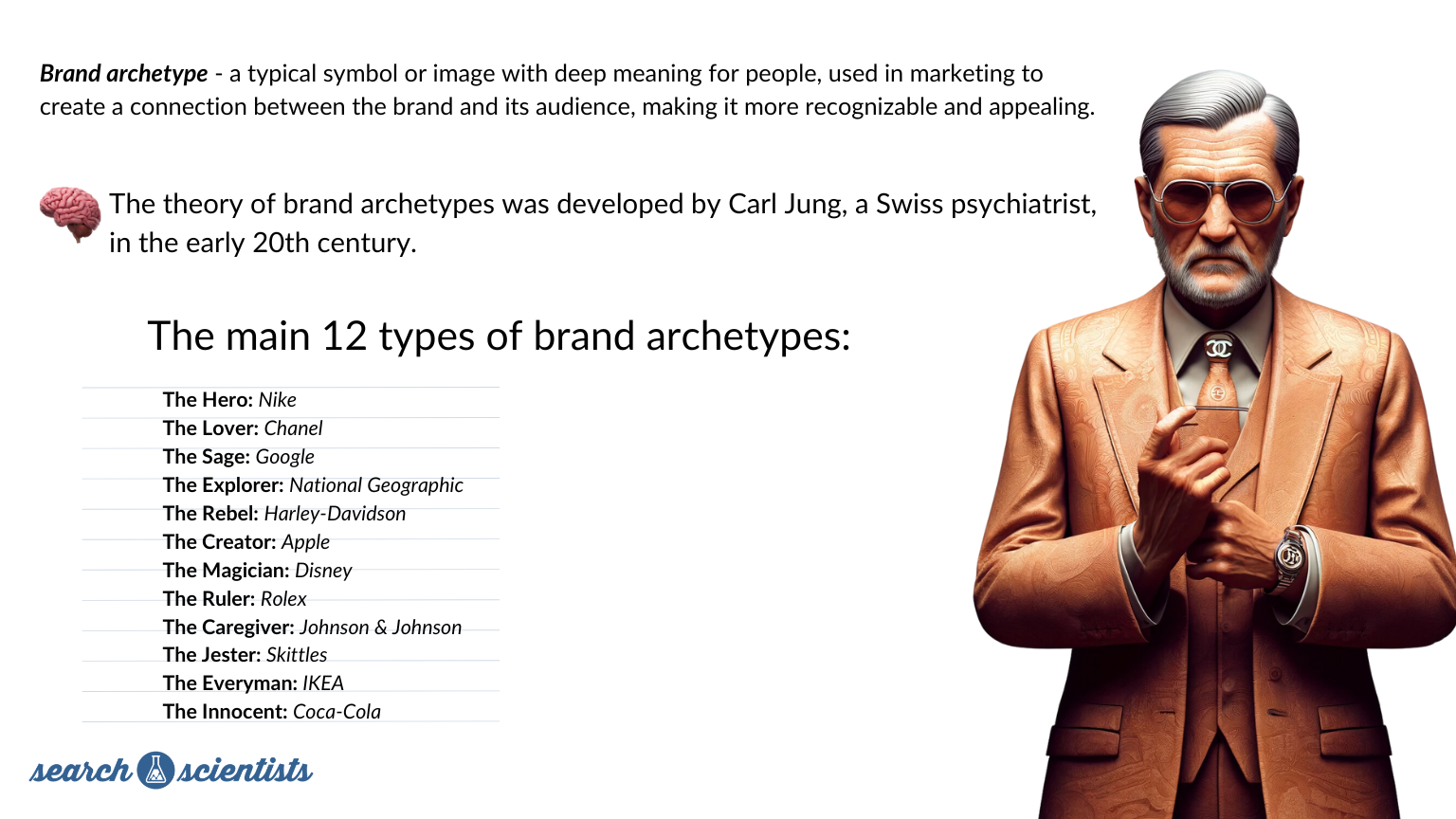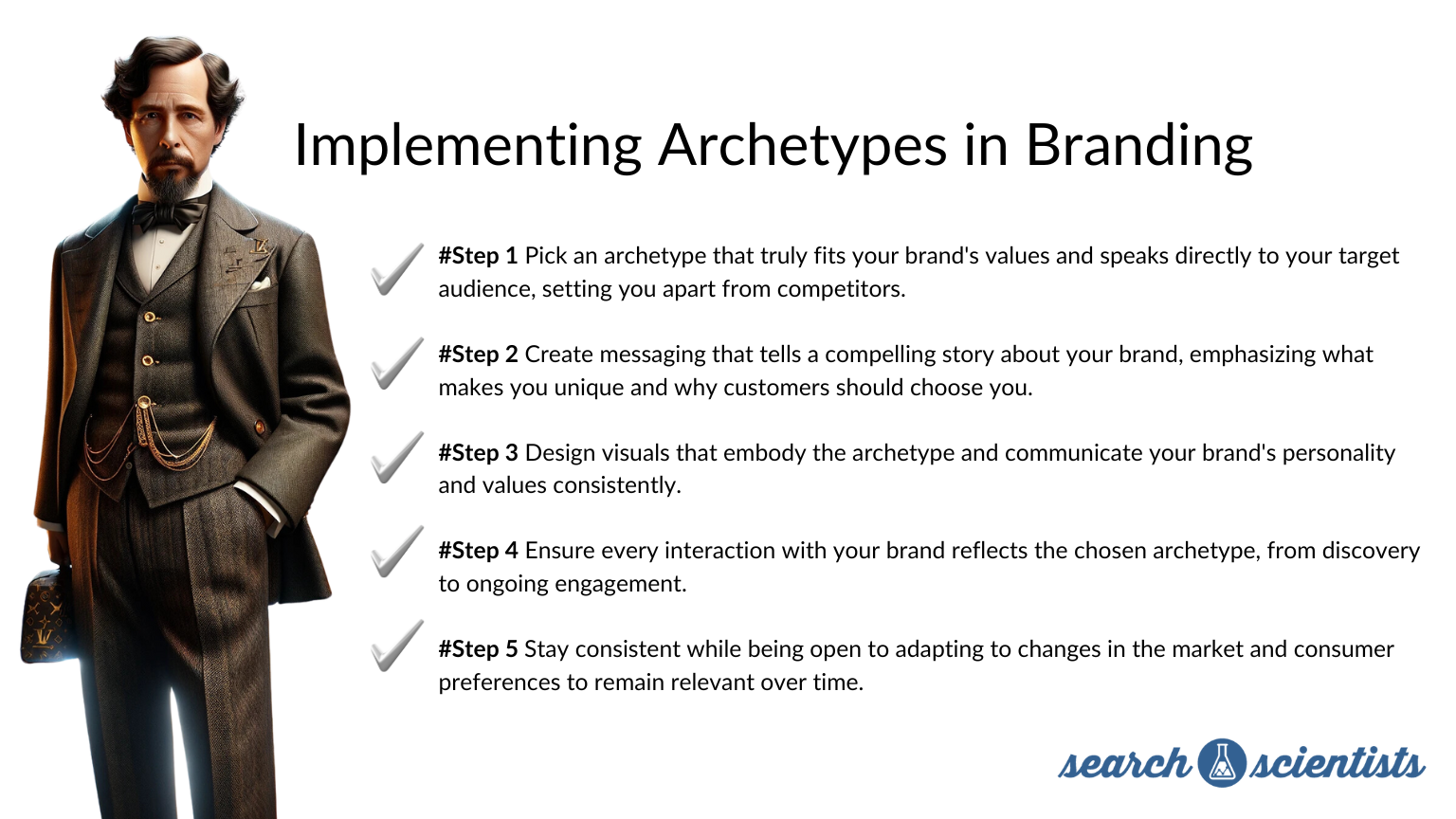In today’s competitive world, brands face the challenge of standing out among many similar products or services. To meet this challenge, understanding brand archetypes is essential for a successful marketing strategy.
Understanding the archetype market helps brands tailor their messaging to specific customer personalities.
Archetypes are key in shaping how a brand is seen and connecting with its audience emotionally.
Let’s be real—most brands sound the same. “We’re innovative. We care. We deliver quality.” Yawn.
But drop archetype marketing into the mix? Boom—suddenly your brand has a soul. Whether you’re channeling The Hero, The Rebel, or The Caregiver, it’s not just storytelling—it’s strategy.
Effective archetype marketing allows companies to build consistent and relatable brand identities.
I’ve used archetypes to build product pages that actually convert, ads that people remember, and brands that feel like people.
Archetype marketing strategies are widely used in Europe and USA to resonate with cultural values.
Through the article by Search Scientists, you will gain a unique insight into 12 different types of brand archetypes.
Archetype marketing helps brands establish deeper emotional connections with their audience by leveraging universal human themes.
Which archetype do you believe best represents your favorite brand?
Table of Contents
What are brand archetypes in marketing?
Brand archetypes are like universal symbols that everyone understands.
They were first talked about by a psychologist named Carl Gustav Jung.
Choosing the right marketing archetype can differentiate your brand in a crowded marketplace.
These symbols are basic images that we all have in our minds. In marketing, they help create a strong connection between brands and their customers. They make brands easier to recognize and more appealing.
Marketing archetypes provide a framework for storytelling that engages consumers on a deeper level.
By using these symbols smartly, brands can make people feel strong emotions and build long-lasting relationships with them.
These symbols are full of meaning from history, culture, and psychology. Because of this, brands that use them well see more loyal customers.
Studies have found that brands using these symbols can keep up to 30% more of their customers.
In simple terms, brand archetypes help brands stand out and make people feel connected to them.
Why are archetypes important for branding?
Archetypes in advertising evoke familiar narratives that make campaigns more memorable.
How can they benefit a brand?
Using archetypes helps a brand establish its identity and style in the market, making it more memorable and attractive to consumers. They also help define the brand’s core values, building lasting relationships with customers.
The archetype market thrives on targeting specific customer personas, allowing brands to tailor their messaging and visual identity.
Statistics and examples confirm the importance of using archetypes in branding.
Archetypes marketing helps businesses align their brand voice with the expectations of their target audience.
Studies indicate that brands adept at utilizing archetypes witness a notable increase in brand loyalty, with some experiencing up to a 40% boost in customer engagement and retention.
For instance, Nike identifies with the Hero archetype, inspiring consumers towards achievement and surpassing limits. This helps them build a community of supporters, a key component of the company’s success.
In this blog, we will explore various brand archetypes, their characteristics, and effective usage in branding.
By understanding these archetypes, you’ll learn how to choose the right one for your brand and use it to succeed in the market.
What are the 12 brand archetypes?
What makes this theory stand out is its ability to tap into basic human instincts and emotions that influence consumer decisions.
In archetype marketing, brands use distinct character types to create stories that resonate on a psychological level with their customers.
By aligning with specific archetypes, brands can evoke deep-seated feelings, aspirations, and desires in consumers, fostering loyalty and connection.
In this exploration of archetypes in branding, we’ll examine twelve core archetypes, each with its own unique traits, examples of representative brands, and underlying psychological principles.
Through this analysis, we aim to uncover how brands use archetypes to communicate their values, stand out in the market, and build strong relationships with consumers.
In archetype marketing, once you know your brand is, for example, a “Caregiver,” you can shape everything from social posts to packaging to reflect empathy, warmth, and helpfulness.
Archetype Hero
Understanding archetypes in marketing allows businesses to communicate their values more effectively and connect with their audience’s core desires.
The hero or leader archetype, characterized by bravery, willpower, and determination, inspires consumers to achieve great goals and victories.
Moreover, brands embodying this archetype, such as Nike, Apple, and Red Bull, actively encourage sportsmanship, innovation, and boldness.
For example, Nike’s well-known slogan “Just Do It” perfectly captures the spirit of this archetype, encouraging people to push their boundaries and achieve their goals.

Archetype Sage
Using archetypes in advertising, brands can tap into familiar symbols and narratives that instantly evoke emotional responses from viewers.
The sage or expert archetype is marked by knowledge, intelligence, and experience.
Moreover, brands utilizing this archetype act as authorities in their field, instilling trust and confidence in consumers.
Examples include Google, Harvard University, and National Geographic, which actively promote knowledge and education.
Archetype Warrior
The warrior archetype is defined by courage, protection, and resilience. Brands embodying this archetype symbolize the fight for values and principles.
Additionally, examples include Jeep, GoPro, and Under Armour, which are associated with adventure, athleticism, and bravery.
For instance, Jeep, as the warrior archetype, can inspire courage by showcasing its tough vehicles conquering difficult terrains.
Through marketing campaigns and product features emphasizing durability and off-road capabilities, Jeep builds confidence in consumers to explore new adventures.

Archetype Lover
The lover archetype is characterized by passion, emotional connection, and sensuality.
Brands using this archetype create emotional bonds with their audience.
Examples include Victoria’s Secret, Chanel, and Godiva, which are associated with luxury, sensuality, and attractiveness.
One example of Chanel utilizing the lover archetype in its advertising campaigns is its promotion of the iconic fragrance, Chanel No. 5.
In a famous commercial featuring actress Nicole Kidman, Chanel depicted romantic and intimate moments, evoking a sense of allure and desire associated with the scent.
Archetype Magician
The witch or magician archetype is characterized by mystery, power, and transformation.
Brands utilizing this archetype employ magic and mystery to create unique products and services.
Additionally, examples include Disney, L’Oréal, and Oreo, which evoke a sense of enchantment and charm.
One example of Disney using the witch or magician archetype is in its advertising for the movie “Maleficent”. In this campaign, Disney highlighted the character Maleficent, a powerful sorceress, to captivate audiences. The ads emphasized her magical abilities and transformation, resonating with themes of power and change.
The “Maleficent” campaign saw significant engagement, with millions of views on social media platforms shortly after its release.
This demonstrates Disney’s effective use of the witch or magician archetype to generate excitement and anticipation for the film.

Archetype Nurturer
The mother or nurturer archetype is characterized by nurturing, compassion, and empathy.
Brands embodying this archetype provide comfort and security.
Additionally, examples include Johnson & Johnson, Campbell’s, and Betty Crocker.
For example, Johnson & Johnson embodies the mother or nurturer archetype by providing care and comfort to families worldwide.
With its range of products, including baby care items and first aid supplies, the brand aims to nurture and protect individuals at every stage of life.
Through its marketing campaigns emphasizing themes of love, safety, and trust, Johnson & Johnson has become a trusted companion in households globally.
Archetype Rebel
The rebel or outlaw archetype, characterized by freedom, independence, and defiance, challenges the status quo and champions individuality and self-expression.
Moreover, brands embodying this archetype, such as Harley-Davidson, Virgin, and Apple, have distinct identities that resonate with consumers seeking to break free from societal norms.
One example is Apple’s “Think Different” campaign from the late 1990s.
This campaign celebrated iconic figures who defied conventions and changed the world, such as Albert Einstein, Martin Luther King Jr., and John Lennon.
By aligning itself with these rebellious figures, Apple positioned itself as a brand for innovators and free-thinkers, appealing to consumers who valued creativity and nonconformity.

Archetype Child
The child or innocent archetype, known for joy, spontaneity, and curiosity, embodies simplicity and safety.
Moreover, brands using this archetype, such as Coca-Cola, Ben & Jerry’s, and LEGO, evoke a sense of nostalgia and playfulness, appealing to consumers’ desire for carefree enjoyment.
For instance, LEGO’s “Rebuild the World” campaign celebrates children’s boundless creativity and imagination, encouraging them to build, explore, and dream without limits.
By showcasing diverse play scenarios and highlighting the endless possibilities of LEGO bricks, the campaign captures the essence of innocence and curiosity.
Through its playful messaging, LEGO reinforces its identity as a brand that fosters joy and imagination, resonating with both children and adults alike.
Archetype Guide
The guide or sage archetype, known for guidance, wisdom, and mentorship, portrays brands as trusted advisors offering direction and assistance to consumers.
Additionally, examples such as FedEx, Michelin, and The North Face exemplify this archetype, providing reliable support and expertise.
For example, The North Face’s “Never Stop Exploring” campaign embodies the guide archetype.
This campaign features outdoor enthusiasts exploring remote landscapes, highlighting the brand’s commitment to adventure.
By showcasing individuals conquering challenges with The North Face gear, the campaign positions the brand as a knowledgeable guide, helping consumers embark on their own journeys with confidence.
Archetype Jester
The jester or fool archetype, known for humor, playfulness, and spontaneity, embodies brands that bring joy and entertainment.
Examples such as Old Spice, Skittles, and Doritos exemplify this archetype, offering light-hearted experiences and products that provoke laughter.
For example, Doritos’ “Crash the Super Bowl” campaign perfectly encapsulates the jester archetype.
This campaign invited consumers to create their own Doritos commercials for the chance to have them aired during the Super Bowl.

Archetype Creator
The creator or artist archetype, known for creativity, innovation, and self-expression, defines brands that inspire imagination and innovation.
Examples such as Apple, LEGO, and Adobe embody this archetype, offering tools or experiences that foster self-expression.
For instance, Adobe’s “Make It with Creative Cloud” campaign illustrates the creator archetype.
This campaign showcases how people use Adobe’s creative tools to bring their ideas to life.
By featuring real-world projects and success stories from artists and designers, Adobe demonstrates how its software enables users to express themselves creatively.
Archetype Ruler
The ruler or magistrate archetype, defined by authority, control, and responsibility, portrays brands as symbols of power and leadership.
Additionally, examples such as Rolex, Mercedes-Benz, and Microsoft embody this archetype, offering products or services associated with prestige and excellence.
For example, Rolex’s “The Rolex Way” campaign epitomizes the ruler archetype. This campaign highlights the brand’s legacy of precision, performance, and exclusivity. By featuring influential figures and achievers who embody values of excellence and success, Rolex positions itself as a symbol of authority and aspiration.

How do archetypes influence consumers and brand perception?
Archetypes are like keys to the human psyche, unlocking deep emotions and connections. In marketing, they’re powerful tools for reaching consumers on a personal level.
This chapter explores how archetypes shape perceptions of brands and why they’re essential for brand development.
Archetypes evoke emotions in consumers, creating strong emotional connections to brands. For example, the hero archetype instills bravery, while the lover archetype evokes desire and intimacy.
By adopting specific archetypes, brands can differentiate themselves in the competitive market.
Each archetype has its own characteristics, helping brands establish a unique identity that remains memorable to consumers.
Archetypes address common human experiences, making them universally appealing. Brands that utilize archetypes tap into shared symbols, resonating with consumers on a deeper level.
What are the benefits of using archetypes for branding?
Archetypes help brands tell a consistent story across different platforms, maintaining authenticity and strengthening brand identity.
Brands can show their true colors through archetypes in a way that feels genuine to consumers, building trust and connection.
Using archetypes effectively helps brands build lasting relationships with consumers by weaving universal themes into their stories, keeping people engaged and loyal.
Ultimately, archetypes are the secret ingredient of marketing, enabling brands to connect with consumers, stand out, and build lifelong relationships.
Archetypes greatly influence how consumers behave and perceive brands, helping brands to stand out and build stronger connections.
For example, take Coca-Cola’s “Share a Coke” campaign, which represents the innocent archetype.
This campaign personalized Coke bottles with individual names, encouraging people to share moments of happiness with friends and family.
According to Coca-Cola, the campaign led to a substantial boost in sales and engagement, with over 150 million personalized bottles sold in the United States alone.
This illustrates how using archetypes can create emotional ties with consumers and drive real business growth.
Understanding their power is essential for crafting marketing strategies that truly resonate.
How do archetypes help small businesses develop their brands?
In small businesses, archetypes provide valuable guidance for brand development.
To implement archetypes effectively, small businesses can start by asking themselves key questions such as:
- What values and traits do we want our brand to embody?
- Who is our target audience, and what archetypes resonate with them?
- How can we integrate these archetypes into our branding, messaging, and customer experience?
Here are examples of how small and medium businesses can specifically apply archetypes within selected niches.
Boutique Wellness Studio – Sage
A boutique wellness studio can adopt the sage archetype, positioning itself as a trusted expert in holistic health and wellness.
By providing tailored services and guidance grounded in extensive knowledge and wisdom, the studio can empower clients on their path to self-improvement and holistic healing.
To apply this archetype in marketing, the studio could offer informative workshops, personalized consultations, and educational content to establish authority and build trust with clients.
Additionally, highlighting testimonials and success stories from satisfied clients can further reinforce the studio’s credibility and expertise in the wellness industry.
Artisanal Bakery – Creator
An artisanal bakery can embody the creator archetype by showcasing its creativity and craftsmanship through unique, handcrafted pastries and baked goods.
To apply this archetype in marketing, the bakery could showcase its creations on social media, website galleries, and in-store displays.
Hosting baking workshops or behind-the-scenes tours can also engage customers and enhance the bakery’s brand image as a hub of culinary innovation.
Vintage Clothing Store – Explorer
A vintage clothing store can embrace the explorer archetype, inviting customers on a journey of discovery through its unique selection of one-of-a-kind pieces.
By tapping into nostalgia and encouraging customers to explore hidden treasures, the store can create an immersive shopping experience.
To apply this archetype in marketing, the store could host themed events or pop-up shops, share stories behind each curated piece on social media, and offer personalized styling sessions to enhance the sense of adventure and excitement for customers.
If you define your archetype market early on—like targeting Explorer types who seek freedom—you can tailor your product messaging to match their motivations and lifestyle.
Implementing Archetypes in Branding
Incorporating archetypes into branding starts with understanding the brand’s core values, personality, and goals.
This includes identifying the target audience, analyzing competitors, and defining the desired brand image.
Once these factors are established, the next steps include:
#Step 1 Pick an archetype that truly fits your brand’s values and speaks directly to your target audience, setting you apart from competitors.
#Step 2 Create messaging that tells a compelling story about your brand, emphasizing what makes you unique and why customers should choose you.
#Step 3 Design visuals that embody the archetype and communicate your brand’s personality and values consistently.
#Step 4 Ensure every interaction with your brand reflects the chosen archetype, from discovery to ongoing engagement.
#Step 5 Stay consistent while being open to adapting to changes in the market and consumer preferences to remain relevant over time.
Imagine Charles Dickens planning his attire for an upcoming event.
He’d likely choose a suit that highlights his social status, such as one from Louis Vuitton.
This illustrates the importance of brand archetypes in defining one’s image and status.
By following these steps, businesses can effectively use archetypes in branding to create strong brand experiences, build emotional connections with their audience, and stand out in the market to achieve success.
How can businesses implement the archetype effectively?
Implementing your brand’s archetype requires a strategic approach supported by data-driven insights and a deep understanding of your target audience.
This chapter explores how to integrate the chosen archetype into different aspects of your brand, supported by statistical analysis and actionable steps for success.
Analyzing Market Research and Consumer Data
Start by examining market research and consumer data to understand trends and preferences within your target demographic.
Look for patterns in consumer behavior and sentiment that match the values and traits of your chosen archetype.
Visual Identity Enhancement
Utilize statistical analysis to guide the design elements of your brand’s visual identity.
Conduct A/B testing on logo designs, color schemes, and imagery to identify the most resonant options with your audience, ensuring alignment with your chosen archetype.
Messaging Improvement
Use data analytics to refine your brand messaging and communication strategies.
Test different taglines, narratives, and marketing campaigns to see how well they evoke the desired emotions and associations linked to your archetype.
Product Development Insights
Use consumer feedback and market research to shape product decisions that match your archetype.
Conduct surveys and focus groups to understand which product features resonate most with your target audience.
Improving Customer Experience
Use data-driven strategies to enhance the customer experience in line with your archetype.
Analyze customer feedback, online reviews, and social media sentiment to find areas for improvement and opportunities to strengthen emotional connections with your brand.
Improving Marketing Campaigns
Utilize statistical analysis to optimize your marketing efforts for better results.
Measure key performance indicators like click-through rates, conversion rates, and engagement metrics to evaluate campaign effectiveness and adjust your strategy as needed.
Don’t forget that you can always turn to Search Scientists for PPC Management Services, ensuring that your marketing efforts are in expert hands.
Summary
Using archetypes in branding is important for creating emotional connections with audiences and telling stories that resonate with consumers. They help brands stand out, grab attention, and gain an edge by reflecting what consumers value and desire.
Use archetypes marketing when you’re developing your brand strategy or launching a new product — start by selecting one of the 12 Jungian archetypes (like the Sage or the Rebel), then apply it to your tone of voice, visual identity, and customer messaging across your homepage, About page, and ad creatives to build emotional consistency and trust.
Looking forward, we can expect more brands to use archetypes in their strategies as consumers want deeper connections with brands that share their values. So, archetypes will continue to be crucial in successful branding efforts.
To sum up, archetypes boost brand recognition, attract new customers, and build loyalty by connecting with consumer emotions and values. Because of their significant impact and potential for creative brand development, archetypes remain important in today’s business world.
Check out more blog posts:

Technical SEO: A Complete Guide to Optimizing Your Website for Search Engines


Top Tips for Creating Ad Creatives Using Gemini and ChatGPT
FAQ
What are marketing archetypes?
Marketing archetypes are deep psychological models of behavior based on Carl Jung’s theory, which help brands create an emotional connection with their audience. Each archetype has a unique brand personality, communication style, key messages, and tone of voice.
Why use archetypes in marketing?
Using archetypes allows brands to establish a strong and consistent identity, increase customer loyalty by fostering emotional connections, differentiate themselves from competitors, and develop a unique and recognizable tone of voice in content marketing, advertising, and social media.
How to choose the right archetype for your brand?
To define the right archetype, analyze your audience to understand their values, needs, and pain points. Identify your brand’s mission and the message you want to convey. Study competitors to determine how they position themselves and where your brand can stand out. Develop a communication style that aligns with your chosen archetype.
Can you combine archetypes in marketing?
Yes, many brands use a primary archetype and a secondary (sub-archetype) to create a more dynamic identity. For example, Apple blends The Magician’s focus on innovation and transformation with The Creator’s emphasis on design and creativity.
How to use archetypes in content marketing?
Archetypes help brands create content that resonates with their audience by reinforcing a consistent voice and message. They guide personalized messaging in advertising and enhance storytelling in branding, making marketing campaigns more engaging and memorable.
How do archetypes impact brand strategy?
Archetypes shape a brand’s tone of voice, visual identity, and key messaging. They influence the choice of colors, logos, and packaging while also defining the way a brand communicates across different marketing channels.
Where else are archetypes used besides marketing?
Archetypes are widely applied in copywriting and storytelling, product and service design, UX/UI, and public relations. They help develop compelling narratives, create strong brand identities, and establish deep emotional connections with consumers.



